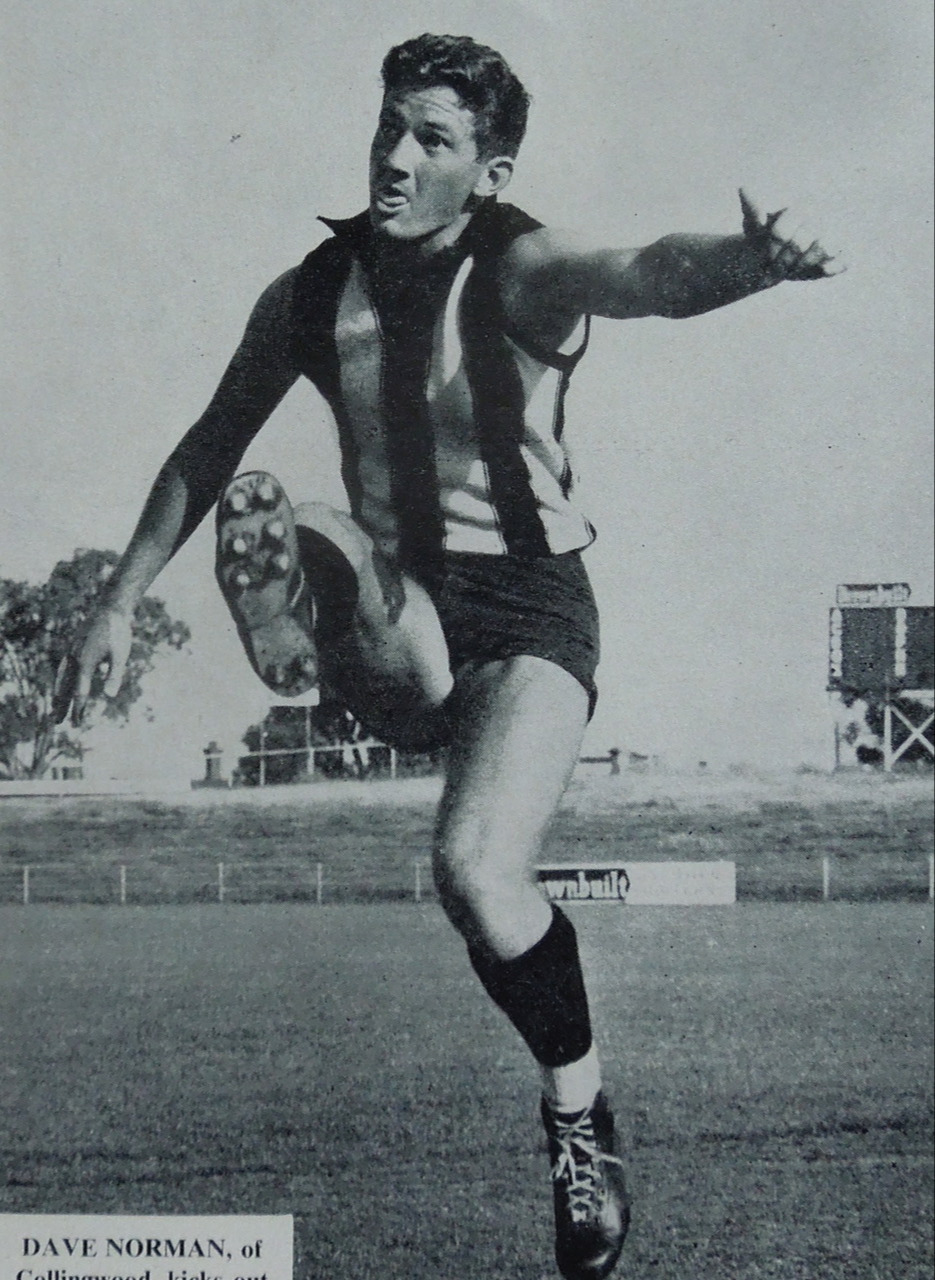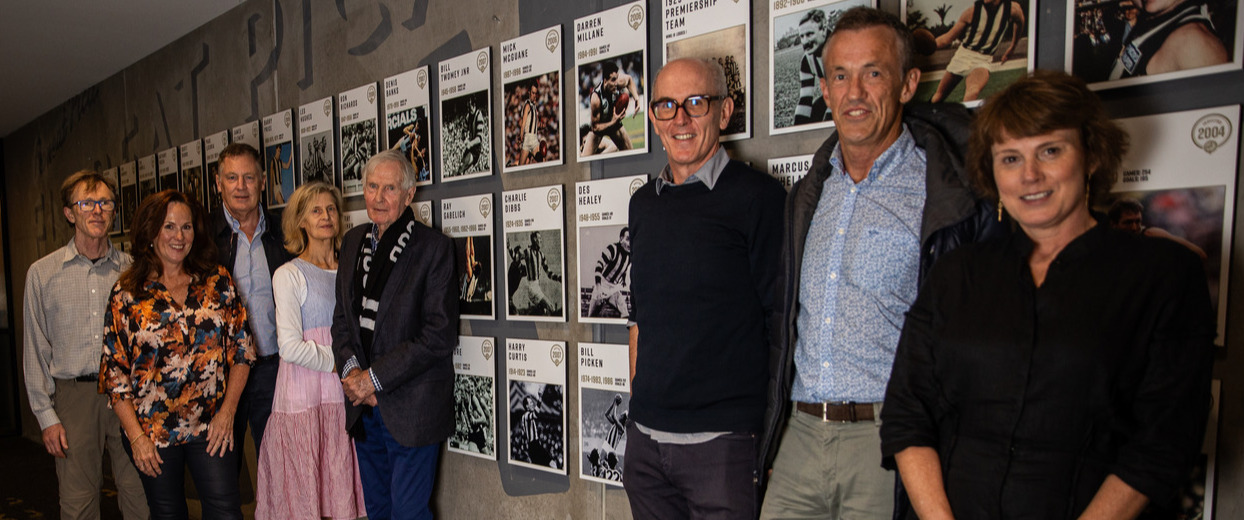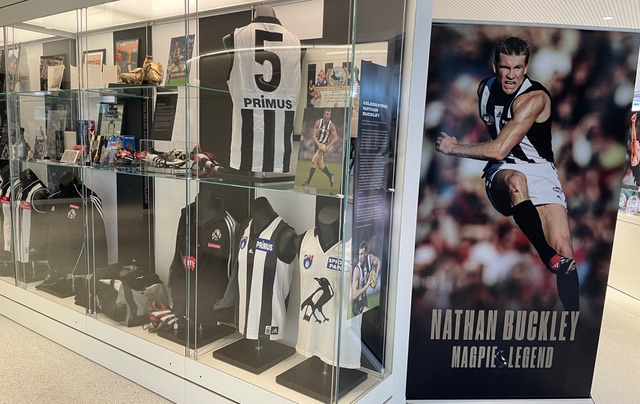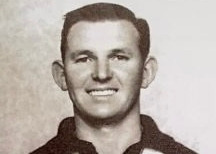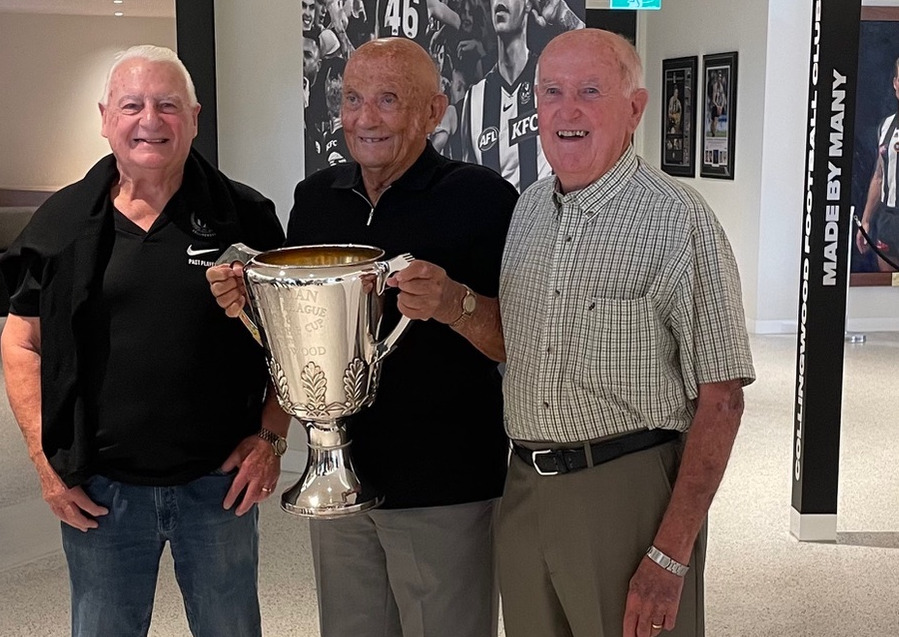
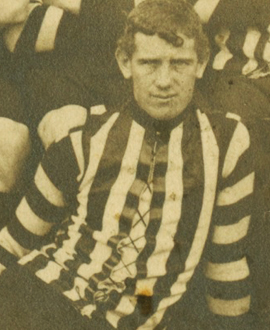
George Marsh was, for a long time, a classic case of mistaken identity.
It’s always been known that a guy called George Marsh played seven games for us in 1905, then later enjoyed a wonderful VFA career with both Brunswick and Coburg. But AFL records had him identified as George Herbert Marsh, whereas research from the Collingwood Archives team in 2023 revealed that he was actually an entirely different person named Mungo George Marsh.
This discovery not only gave the AFL its first ever player named ‘Mungo’, but also gave the Magpies another Anzac, as Mungo served in the First World War.
Mungo George Marsh (the ‘Mungo’ came from his maternal grandfather) was born in Bendigo on New Year’s Eve in 1884. His father William was a miner who later worked for the railways. The family moved to Melbourne and George found himself playing football with Coburg. He was a highly talented rover/forward, who won a silver medal from the club in 1903.
By 1905 his form was such that Collingwood started paying attention. He played seven games for the club that year, and also was part of the team that travelled to South Australia in August of that year (he played in at least two of the four games). And the early reports were encouraging.
He was described as a “clever junior” after one of his early VFL games and was “applauded for some splendid football on the right forward lines” after a game against Melbourne. He showed early signs of having a good nose for goal, kicking a major in three of his first four games and being described as a “busy and consistent forward.”
After his debut game The Herald said: “Marsh, the Coburg lad, created a good impression by his play with Collingwood against St. Kilda. He was tried out on the half-forward line, and was also given a show roving, Condon standing aside to permit the recruit to prove his prowess.”
George played in the semi-final loss to Carlton, but was dropped from the Grand Final team as the Pies opted for a stronger, more experienced team. But it seems that move may have tempted George to look elsewhere, because by the following season he had been cleared to Brunswick in the VFA. He then seems to have gone to Tallarook, crossed to the Collingwood Trades team and then returned to Brunswick. He announced that he was retiring, but instead resumed playing with Coburg in the Melbourne District Association, and led that club to successive Premierships as captain-coach.
“George Marsh has once more struck his old form,” wrote The Herald in 1914. “What this means to Coburg was proved on Saturday last, when he did yeoman service on the forward line, marking, running, and kicking with all his old skill.”
He was still leading Coburg when he enlisted to serve in the First World War in 1915. After initially being rejected because of problems with his teeth he was finally accepted, leaving Australia in October of 1915 as part of the 11th reinforcement of the 5th battalion. Just a few weeks before he left he married his wife Annie, who already had a son named Percy (who would go on to play both Australian football and rugby union for Queensland).
George arrived in Egypt in January 1916 to defend the Suez Canal, alongside his fellow soldiers of the 5th Battalion who had just returned from Gallipoli. In March 1916 he travelled to Marseille, France and subsequently the Western Front, fighting at Pozieres on the Somme, Ypres in Flanders, and at Amiens. He also captained the 5th battalion football team while on service. He returned to Australia in May of 1919 and would go on to have three children of his own with Annie.
Obviously a fine sportsman, Mungo George Marsh holds an unusual place in footy history solely because of his name. But his overall career was something to be proud of too.
- Michael Roberts
CFC Career Stats
| Season played | Games | Goals | Finals | Win % |
|---|---|---|---|---|
| 1905 | 7 | 3 | 1 | 85.7% |
CFC Season by Season Stats
| Season | GP | GL | B | K | H | T | D | Guernsey No. | ||
|---|---|---|---|---|---|---|---|---|---|---|


